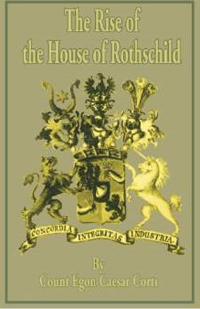By Sheila Orysiek

 SAN DIEGO — When handed lemons some people complain, others make lemonade and one or two create Chateau Lafite Rothschild. In the late 1700’s when the ghetto gate slammed shut at night, the Jews of Frankfurt am Main, Germany, were locked into an urban prison. The inhabitants of that horribly crowded ghetto saw it as it was meant to be: demeaning, restrictive, a constant reminder of the hatred and derision of the larger population which surrounded them.
SAN DIEGO — When handed lemons some people complain, others make lemonade and one or two create Chateau Lafite Rothschild. In the late 1700’s when the ghetto gate slammed shut at night, the Jews of Frankfurt am Main, Germany, were locked into an urban prison. The inhabitants of that horribly crowded ghetto saw it as it was meant to be: demeaning, restrictive, a constant reminder of the hatred and derision of the larger population which surrounded them.
However, Mayer Amschel Rothschild saw that ghetto gate quite differently – not what it locked in but what it locked out. While locking him in it also locked out much of the general criminal element in the larger city. Amidst the overwhelming poverty who would guess there was a fortune hidden in a cellar beneath a cellar under a tiny ugly house in the ghetto?
When the gate opened in the morning, Rothschild took some obscure coins paid to him for the cloth he sold in his shop and spread them out on the steps of the government building where the aristocracy congregated. They were intrigued and bought these coins from him. However, what he was really selling was trust: value for value. They began to give him their money to invest and/or keep safe; they trusted him more than they trusted one another. He hid that money in his cellar beneath his house safely locked behind the ghetto gate.
When Napoleon ravaged Europe the richest of the many German princes was also militarily the weakest. In desperation he gave his fortune to Rothschild who gave it to his son, Nathan, who took it to England and quadrupled it. Imagine the surprise of the German prince when after Napoleon was defeated the money was returned to him – with interest. Blessed with brilliant sons, Rothschild set up banking houses across Europe and England and that was just the beginning.
It was Rothschild, by seeing to it that the British soldiers were paid, thus enabled Wellington to win against Napoleon and it was a Rothschild handshake which secured the Suez Canal for England. In addition to their influence on history, what I find intriguing is the family trait of thinking “outside the box.” Of course, the financial means to do so, helps; but the two don’t always go together.
This, and so much more, about a legendary family can be found in two books:
The Rothschilds by Frederic Morton (1962/1998) and The Rise of the House of Rothschild by Count Egon Caesar Corti.
*
Orysiek is a freelance writer who focuses on literature and the arts. Your comment may be placed in the box provided below or sent directly to the author at sheila.orysiek@sdjewishworld.com